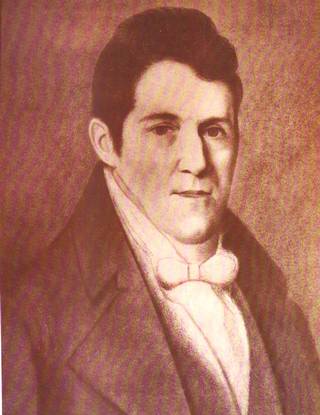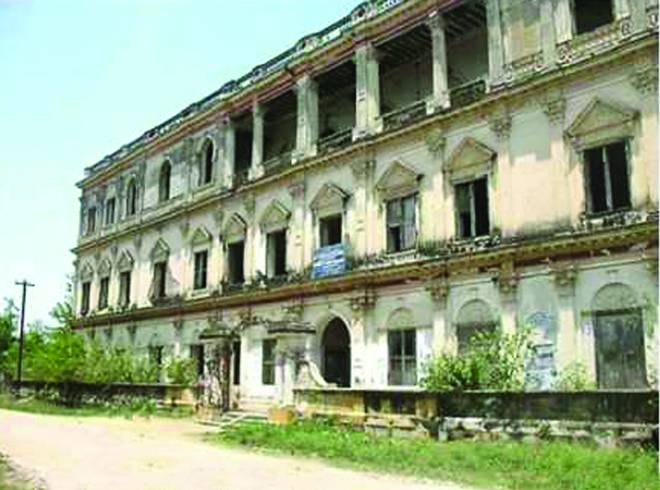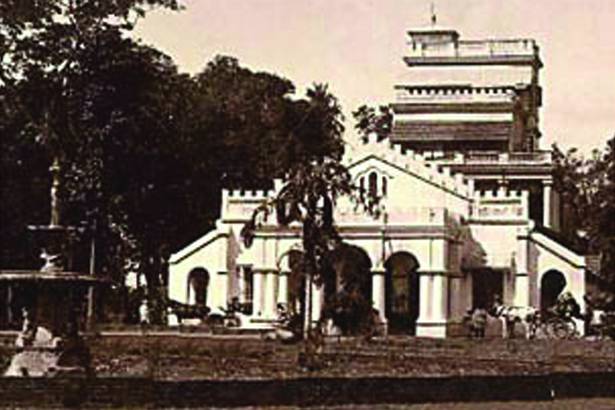My Binny story last week had me recalling the life the early 19th Century sahibs led, as reflected in John Binny’s and Thomas Parry’s wills. Discussion of that lifestyle is sure to generate a plethora of views, but one view I don’t think can be denied, namely, that they had a conscience and a sense of obligation. But discussing the morality of the times is not my intent today, I merely present the gist of two fascinating documents.
John Binny, a bachelor, died in Madras in 1824. His last home leave began in August 1816. In his 1823 will he left a legacy to “a child now of the age 5 years and 5 months named John William Crouchley and boards with one under the charge of Mrs Wicklow…” Make of that what you will. Rather different is the record in India. The Company kept paying 8 pagodas (about ₹25) monthly in Binny’s name to each of two children. They each also received an annual clothing allowance of ₹105 and the elder, Charles, got ₹11 monthly from 1821 for education in the Madras Free School. In later years, the Binny records list a clerk, Charles Binny, who seemed of modest means. Was the second child his sister Belmina who received a marriage settlement of ₹3000, making you wonder whether that too had been left by John Binny? F De Souza, who wrote The House of Binny 50 years ago, leaves you wondering – particularly for answers.

Thomas Parry, in Madras from 1788, nine years before Binny, has a better recorded life, judging by his will, curiously also dated 1823. He too died in 1824. He left ₹110,000 in investments to Mary Pearce, whom he’d married in 1794. She went back for good to England in 1807 with their two children, both dying young there. Unfettered in India, Parry seemed to have enjoyed a home at every place he had business in on the way from Madras to Cuddalore, judging by his will. His legacies started with amounts to young George Parry Gibson (who travelled with him) and Emma Louisa Gibson, both left in the care of a Mrs Dowden. Compounding the mystery, he also left something for two Army captains called Gibson and Dowden!
A little clearer is his relationship with Mary Ann Carr, an Anglo Indian, by whom he had Thomas William Parry and Edward Moorat Parry in the early 1820s. Both probably died young, for only Mary Ann is remembered in the will. But then so are Elizabeth Chinnery, Charlotte Myers, Mrs Weehedie of Tranquebar and the son of Babkismah Candy. Parry certainly enjoyed the good life, even as he built a business empire that still flourishes.
To Parry and Binny India owes its industrial beginnings. While Binny’s is no longer a name in business circles, Parry’s is a respected one, the name remembered in a major junction and the firm’s headquarters building, instead of giving way to new highrise, remaining a landmark in Madras. But where the Parry’s name is endangered is in San Thomé. His home, Leith Castle, near his industrial unit, the first in the country, a tannery and a leather goods ‘factory,’ is a threatened heritage precinct.
* * * *
What’s happened to the prize?
Nobel Prize time reminded 90-year-old Ramachandran (Chandru) Arni of Hyderabad that long before CV Raman and S Chandrasekhar won Nobel Prizes for Physics, they’d won the Jagirdar of Arni’s Gold Medal for Physics/Chemistry at Presidency College, Madras. Why isn’t the College awarding the medal nowadays, he wonders. I look forward to hearing from Presidency, but meanwhile my correspondent’s surname struck a chord.

I first heard of the Jagirdar of Arni when writing a book on the West End Hotel, Bangalore, that, mysteriously, never got published. The West End was the second home of the then Jagirdar, Srinivasa Rao Sahib, the father of my correspondent who lists him as the 12th and last Jagirdar of the 211 sq miles zamin near Vellore. I’d written that the Jagirdar had stayed there occupying a three-room suite for over 36 years and that he was a regular at the Crazy Horse Bar at boisterous post-race parties. His son tells me horses and gambling were very much part of his life, but his “magnificent obsession” was cars. He bought his first car in 1923, when 19, and by 1948, when the Jagir was abolished by Government, had bought 182 cars! He kept the cars in immaculate condition, drove them himself and never lost on a sale of any of them.

The Arni Jagir dates to 1640, when this Maharashtrian Brahmin family received it from Shahjee (the father of Shivaji) for services rendered in the Carnatic. It was the 10th Jagirdar, also Srinivasa Rao Sahib – a name the eldest generally took – who created the endowment for the prize at Presidency in 1877.
A footnote Chandru Arni adds is that his mother was the great great grand-daughter of Purniah, Dewan to Hyder Ali, Tipu Sultan and the Mysore Royal Family. An old Presidencian himself, he says he is the country’s first games developer and the first, in 1953, to a win an official meet in a self-built sports car.
The chronicler of Madras that is Chennai tells stories of people, places, and events from the years gone by, and sometimes from today.
source: http://www.thehindu.com / The Hindu / Home> News> Cities> Chennai / Madras Miscellany – by S. Muthiah / October 30th, 2017